Figure 1. Injury from spray boom contamination with a clear W pattern as the soybean product left the boom.
Analysis of where symptoms appear on a plant can narrow the timing when plants were exposed to the herbicide. Vegetative soybean typically produce a new leaf approximately every 5 days (range 3-10), whereas flowering soybeans produce a new leaf approximately every 3 days (range 2-5). Careful observation of where symptoms occur on the plant may help determine the approximate timing of a herbicide incident and help identify the source.
A basic understanding of the mode of action of the herbicide groups used in our cropping system is critical in diagnosing problems believed to be caused by herbicides.
HG 4 (Herbicide Group 4)
HG 4 mimic the activity of auxin, a plant growth regulator. They translocate to growing points, and primarily affect the development of leaves initiated following exposure.
Several HG 4 products are used in Iowa crops or adjacent areas, which can complicate pinpointing the source of injury (Figure 3). Picloram and aminopyralid are primarily used in pastures and non-crop areas and can persist in soil, hay and manure. Placing hay bays in fields where cattle are placed during the winter frequently results in herbicide injury if the field is planted to soybean (Figure 2). Aminopyralid is also labeled for application with dry fertilizer to pastures, creating risk of movement to soybean fields via future dry fertilizer applications. Clopyralid is used in corn and can carry over to the soybean year in certain conditions. Use of both 2,4-D and dicamba have increased with the introduction of herbicide-resistant crops, increasing the risk of misapplications or drift onto susceptible soybeans.

Figure 2. HG 4-contaminated hay bales were rolled out in this field over the winter.

Figure 3. HG 4 products may move with surface water and contaminate susceptible crops. Dicamba ran off a treated field into non-dicamba tolerant soybean in this field.
Soybean exposed to HG 4 products present in the soil at planting typically produce symptoms by the V1 stage. Exposure with postemergence herbicide applications or drift from other areas often occur after the soybean have products one or more normal leaves.
Severe injury from a misapplication of high rates of any HG 4 product causes epinasty or twisting of the stems within a few days of application, at lower doses epinasty may be absent. High rates of HG 4 products may also cause soybeans to release axillary meristems (Figure 4).

Figure 4. Carryover of a persistent HG 4 compound resulted in released of axillary meristems in this field.
At low doses typically associated with drift, the common symptom of HG 4 products is strapped or cupped leaves. As a general rule, plant growth regulator injury on leaves is very symmetrical, meaning all three leaflets of an individual soybean leaf will be injured similarly. 2,4-D often causes more of a strapped appearance to leaves, making them longer and skinnier with parallel veins (Figure 5); callus tissue or cracks may form on stems as well. Dicamba often causes leaf cupping (Figure 6), but veins at the tips of the leaves may be parallel and stretched (Figure 7). Residues of clopyralid, aminopyralid, or picloram in the soil may result in a combination of symptoms including axillary meristem release and cupped, fiddle-necked, or strapped leaves. Caution is needed when assigning blame to a particular herbicide since one of the products may cause symptoms typically associated with a different herbicide (e.g. dicamba causing elongated leaves rather than cupped).
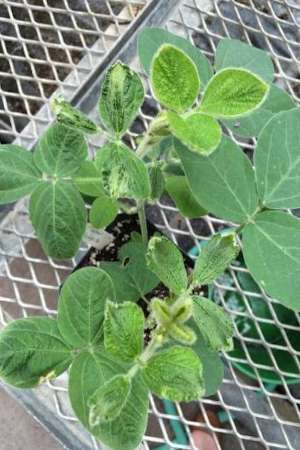
Figure 5. Parallel veins and elongated leaves are a common symptom of 2,4-D exposure.
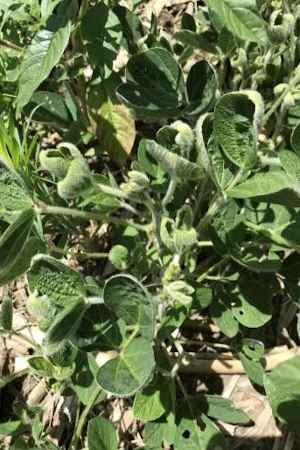
Figure 6. Cupping of new leaves is a common symptom of dicamba.
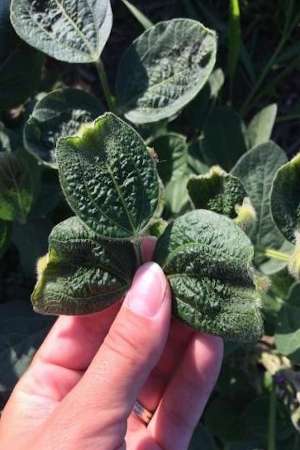
Figure 7. Dicamba symptoms can vary and include parallel veins at the tip of leaves. The light color at the leaf tips is a common HG 4 symptom.
HG 5
HG 5 herbicides interfere with photosynthesis, resulting in chlorosis and necrosis of leaves. They move in the xylem and accumulate in expanded leaves. Both metribuzin and atrazine cause similar injury symptoms on soybeans, and injury may occur as a result of carryover or drift (atrazine) or direct application (metribuzin). Soybean has a relatively low tolerance to metribuzin, thus injury may occur when conditions favor activity. Both atrazine and metribuzin are more likely to injure soybean on high pH soils. Atrazine carryover has been observed this spring, as well as drift from adjacent cornfields. Injury is typically most noticeable on unifoliate and first trifoliate leaves, and appears as interveinal chlorosis and necrosis (Figure 8).
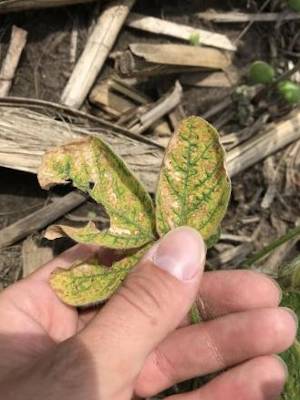
Figure 8. Interveinal chlorosis and necrosis is a symptom of HG 5 products.
HG 14
HG 14 herbicides, also called PPO inhibitors, interfere with photosynthesis. Due to rapid destruction of tissue, there is little translocation and symptoms primarily occur on tissue directly contacted by the herbicide.
Both preemergence and postemergence HG 14 injury is common in soybean. Injury from preemergence HG 14 products occurs when herbicide is splashed or washed onto tissue either at or just after soybean emergence; tissue contacted by the herbicide develops necrosis. It is typically most noticeable on soybean hypocotyls (stems) and cotyledons (Figure 9). Under certain conditions hypocotyls may be girdled, resulting in plant death. Injury from postemergence HG 14 products appears as speckling or necrotic tissue on leaves contacted by the herbicide (Figures 10, 11).
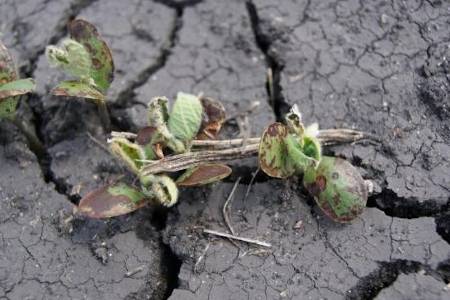
Figure 9. HG 14 injury from preemergent applications can result in splash injury to hypocotyls or cotyledons.
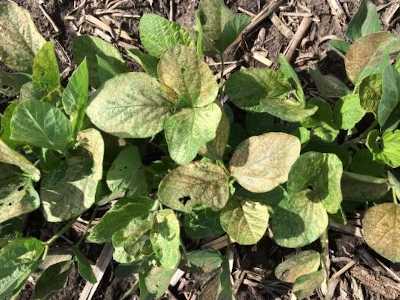
Figure 10. Contact burn from a postemergent application of a HG 14 product.
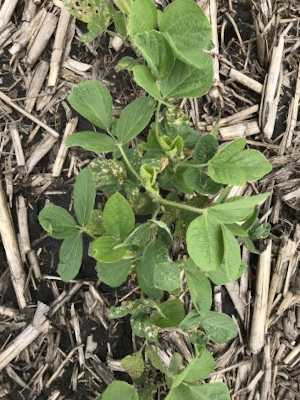
Figure 11. Foliar burn and recovery from a POST HG 14 + HG 15 application to soybean.
HG 15
HG 15 interfere with lipid synthesis, disrupting formation of cell membranes. There is little movement within plants.
Both preemergence and postemergence applications can cause heart-shaped leaflets (Figure 12), postemergence applications may cause other distortions to the margins of leaflets (Figure 13). These symptoms typically occur on the one to two leaves that emerge after the application and are often not symmetrical across all three leaflets of a leaf. Injury from postemergence applications may be confused with dicamba, but the lack of symmetry with HG 15 is helpful in differentiating these herbicides.
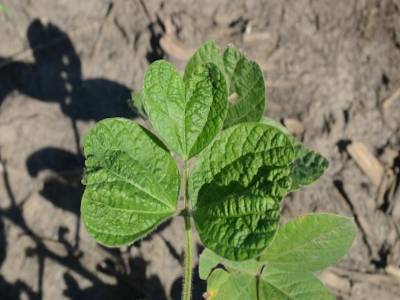
Figure 12. Typical distortion from HG 15 applications includes heart-shaped leaflets like on this plant. Distortion is commonly asymmetrical.

Figure 13. HG 15 leaf distortions can have significant variability.
HG 27
HG 27, also known as HPPD inhibitors or bleachers, interfere with pigments, resulting in chlorosis and bleaching. They move within the phloem, resulting in symptoms appearing on new growth.
We’ve observed both carryover and drift from HG 27 products onto soybeans this year. While carryover from HG 27 products is uncommon in most years, the increased problems are likely due to late applications in 2019 combined with dry summer. HG 27 injury appears as bleaching or yellowing of leaves that emerge after exposure (Figure 14). Symptoms may vary from nearly entire leaf bleaching to just the leaf margins. HG 27 products may also cause crinkling of leaves or may appear to mimic very minor HG 4 injury, but the chlorosis distinguishes it from the HG 4 injury (Figure 15). Due to the common herbicide mixes used in corn, we often see HG 27 injury coupled with HG 5 and/or HG 4 injury (Figure 16).
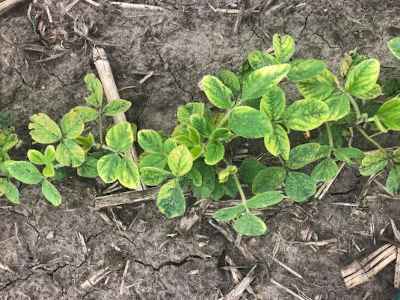
Figure 14. HG 27 injury to soybeans from carryover results in bleaching of new growth, usually appearing by V1.
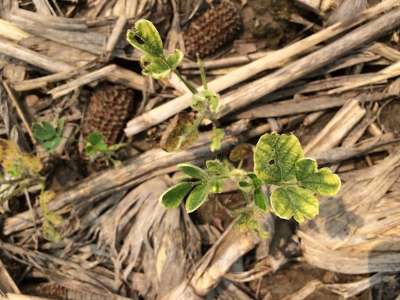
Figure 15. HG 27 injury may look similar to very minor HG 4 injury, but the presence of bleached tissue distinguishes the two, though some new herbicide products combine HG 4 and HG 27 products.
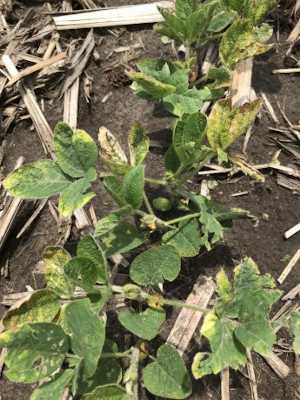
Figure 16. Herbicide drift of HG 27 products is often coupled with other products like those in HG 4 or HG 5.
The spread of herbicide resistant weeds has led to an increase in herbicide rates and the types of herbicides used in corn and soybean. These products may have a low margin of crop safety, or may be persistent, therefore increasing the likelihood of herbicide injury. Determining the source of injury often requires a knowledge of how different herbicides interact with plants, determining what products were used in the area, and identifying patterns of symptoms within the field.
Source : iastate.edu